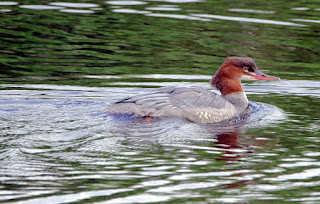The blog’s been in sleep mode for a week or more to take in the holiday period. A good time was had by all but there’s only so much food and drink one person can consume before the urge to go birding takes over. And it was time to find news for a new post.
I set off over the moss roads towards Pilling where I watched an early morning Buzzard quarter a field in almost harrier fashion. A couple of times the Buzzard dropped into the long rough grass where it was totally out of sight and perhaps searching the ground for a meal.
At Gulf Lane Linnets began to arrive as I deposited a bucket of seed into our net ride. After a while I’d counted about 90 Linnets, 11 Stock Doves and a hovering Kestrel.
Kestrel
At Conder Green - 205 Teal, 95 Mallard, 1 Goosander, 44 Wigeon, 2 Goldeneye, 2 Shelduck, 21 Tufted Duck, 4 Snipe, 8 Redshank , 3 Lapwing and 1 Oystercatcher. Also - 1 Little Grebe 1 Kingfisher, 2 Little Egret and 1 Grey Heron.
Kingfisher
The light was very interesting near the coast. Unfortunately a pair of Stonechats showed in poor light and a heavy shower. Then along came the doggy walkers and goodbye Stonechats.
Cockersands
Cockersands
Stonechat
Stonechat
Also here - 1 Kestrel, 10 Goldfinch and 15 Greenfinch. That latter count is almost as good as it gets nowadays for the once abundant Greenfinch.
At Glasson Dock the Linnets proved as flighty as ever and numbered about 300 birds in a couple or more flocks. They alternated between feeding in the wild bird seed mix and flying energetically around and occasionally landing on the roofs of nearby buildings. While the roofs are quite moss covered and might hold insect food it is more likely that the Linnets were taking grit from the roof tiles. Grit is eaten a lot by seed eating birds. But birds have no teeth so grit accumulates in the gizzard and helps to break down the tough seeds by abrasive action thereby making the seeds more easily digested.
Linnets
The forecast is better for Thursday with a wind of less than 10mph so there’s a ringing session planned for this somewhat exposed site.
I drove back over the moss roads where the sound of gunfire was all around as three or more congregations of shooters/farmers planned their route across endless fields. The after Christmas shoot is as much a tradition around here as the birders’ post-Christmas rush for their binoculars.
Buzzard
On Stalmine Moss I found a party of a dozen Whooper Swans plus a few Mutes, together with 35 Lapwings, 2 Curlew and 2 Snipe. There was yet another Kestrel. As I watched the swans a party of 4 Roe Deer strode across the field but as they met the steep banks of the moss road, hesitated. A car went by, the driver seemingly oblivious to the animals, and up the deer leapt. They crossed the road, walked down the other bank and at a trot disappeared into the next wood. Magic Moments.
Whooper Swan
Whooper Swan
Whooper Swans
Roe Deer
Log in again on Thursday. There should be news of those Linnets.
Linking today to Eileen's Saturday Blog.
Linking today to Eileen's Saturday Blog.














































































